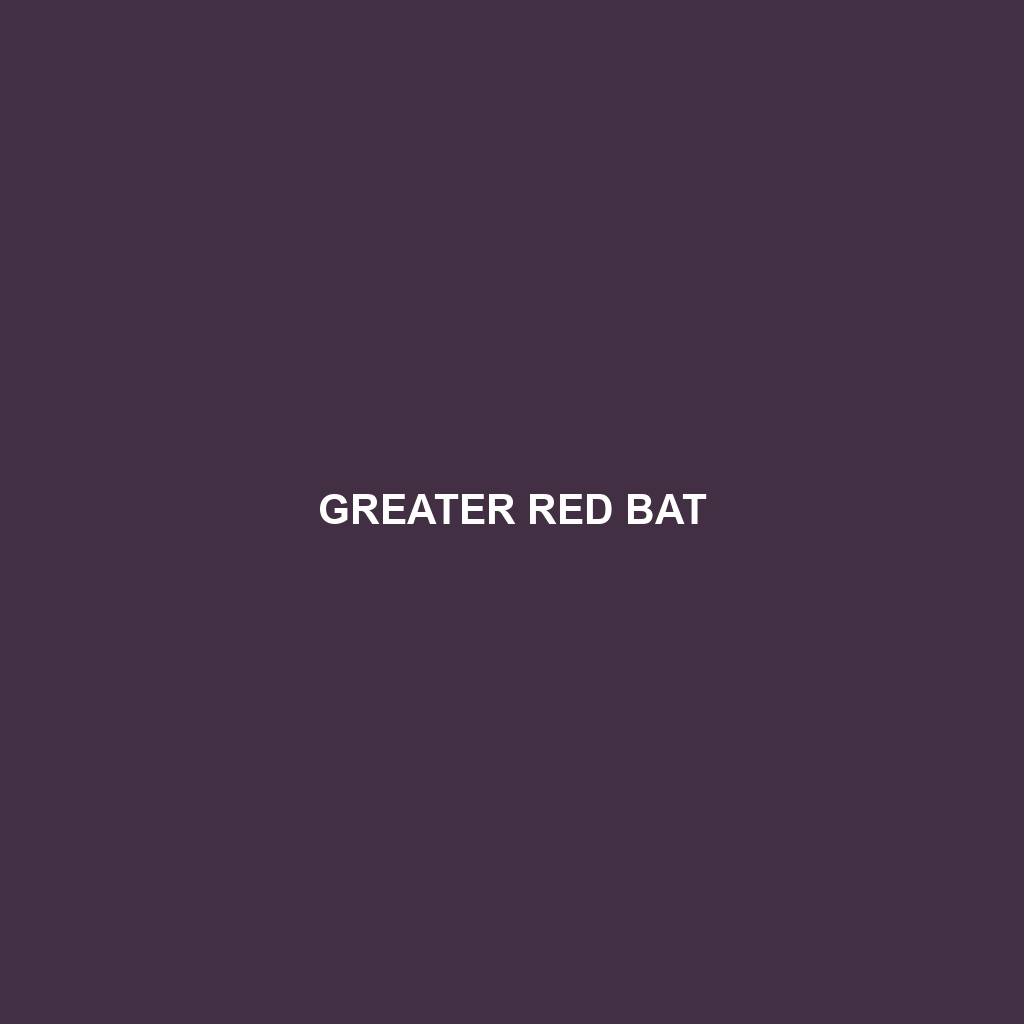Greater Red Bat (Lasiurus borealis)
Habitat
The Greater Red Bat is primarily found across North America, ranging from southern Canada down to southern Mexico. This species typically inhabits forests, especially those featuring deciduous and mixed woodlands. They are also commonly found in areas near water bodies, such as rivers and swamps, as these locations provide ample food and roosting sites.
Physical Characteristics
Adult Greater Red Bats are medium-sized, with a wingspan ranging from 30 to 34 cm (approximately 11.8 to 13.4 inches). Their fur is notably vibrant, characterized by a reddish-orange coloring that can vary slightly in shade. They possess large ears and an elongated body shape, which are distinctive features. The underside of their body is lighter, usually a cream or white color, enhancing their overall striking appearance.
Behavior
Greater Red Bats are primarily nocturnal, exhibiting behaviors typical of many bat species. They are known for their remarkable agility in flight and often hunt for insects midair. During the day, they roost in the foliage of trees, utilizing the leaves for camouflage and protection from predators. These bats can often be seen foraging in urban areas, demonstrating an adaptability to human-influenced environments.
Diet
The diet of the Greater Red Bat consists primarily of moths, beetles, and other flying insects. They are particularly skilled at capturing insects in flight, making them essential for controlling insect populations in their habitats. Common food sources include various types of moths, which tend to be abundant during the summer months, when this species forages most actively.
Reproduction
Greater Red Bats typically breed once a year, with the mating season occurring in the late summer to early fall. After a gestation period of about 50 to 60 days, female Greater Red Bats give birth to one to four pups, usually in late spring or early summer. The young are born hairless and blind and are completely dependent on their mothers for care during the initial weeks of life.
Conservation Status
Currently, the Greater Red Bat is not classified as endangered but faces threats from habitat loss and climate change, which have led to localized declines in some areas. Conservation efforts aim to protect their natural habitats and maintain healthy ecosystems where these bats can thrive.
Interesting Facts
Did you know that Greater Red Bats are among the few bat species that often roost in tree canopies? They are also known to engage in communal roosting, where several bats will gather together during the day, providing warmth and social interaction.
Role in Ecosystem
The Greater Red Bat plays a crucial role in the ecosystem as a natural pest controller, significantly impacting insect populations. Their feeding habits contribute to the balance of food chains, and their presence indicates a healthy environment. Additionally, they serve as prey for various larger predators, such as hawks and owls, thus integrating them into the broader food web.
